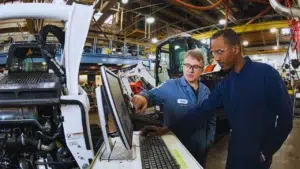A unique institution in Los Angeles, the Museum of Jurassic Technology is an intriguing blend of imagination and fact. Located in the quirky Culver City area, the museum invites visitors into a world where history, art, and the bizarre coexist unexpectedly and compellingly. Established in 1988 by David Hildebrand Wilson and Diana Drake Wilson, the museum was conceived as a place to celebrate the strange, the mysterious, and the paradoxical. Here, the lines between fact and fiction are often deliberately blurred, offering an unconventional museum experience.
The exhibits, which range from historical curiosities to avant-garde art, encourage exploration into the obscure, providing visitors with an immersive journey into the unknown. Whether you’re intrigued by the odd or drawn to the fascinating mysteries of the world, the Museum of Jurassic Technology offers an experience that challenges the very concept of a traditional museum.
A Brief History of the Museum
The Museum of Jurassic Technology (MJT) started as a traveling collection of “cultural curiosities,” moving from place to place before finding a permanent home on Venice Boulevard in Los Angeles. In 1988, David Hildebrand Wilson and Diana Drake Wilson established the museum to create a space for the unusual and the obscure. Over the years, the museum expanded, eventually occupying a 12,000-square-foot space that houses a wide range of exhibits, from the whimsical to the thought-provoking.
Its collection continues to challenge traditional museum conventions, blurring the lines between art, history, and science. In recognition of its groundbreaking work, David Wilson was awarded the prestigious MacArthur Foundation Fellowship in 2001. This honor not only acknowledged his achievements but also highlighted the museum’s profound impact on the cultural landscape. Today, the MJT remains an important institution in Los Angeles, continuously captivating visitors with its blend of the bizarre and the intellectual.
Notable Exhibits at the Museum of Jurassic Technology
In Culver City, Los Angeles, the Museum of Jurassic Technology is well known for its diverse and provocative displays that conflate reality and imagination. Among its most notable displays is the collection of microminiatures by Hagop Sandaldjian, which includes sculptures so tiny they fit within the eye of a needle, showcasing extraordinary craftsmanship.
Another fascinating exhibit is “The Garden of Eden on Wheels,” which delves into the culture and history of mobile home and trailer park communities in Los Angeles, offering a unique perspective on this aspect of American life.
| Exhibit Name | Description |
| Microminiatures of Hagop Sandaldjian | Intricate sculptures, including a rendition of Pope John Paul II, were crafted from a single strand of human hair and placed within the eye of a needle. |
| Garden of Eden on Wheels | A collection exploring the culture and history of mobile home and trailer park communities in Los Angeles. |
| Delani/Sonnabend Halls | Exhibits dedicated to the fictional scientists Geoffrey Sonnabend and Madelena Delani, exploring theories on memory and perception. |
| The Horn of Mary Davis of Saugus | A 19th-century woman who allegedly developed a horn from her forehead is featured in a presentation that examines the relationship between medicine and mythology.. |
| The Lives of Perfect Creatures | An oil portrait gallery of the heroic cosmonaut canines from the Soviet Space Program. |
The Tula Tea Room and Borzoi Kabinet Theater
The Museum of Jurassic Technology provides a place for leisure and cultural immersion in addition to its fascinating exhibits. The Tula Tea Room, designed in the style of a traditional Georgian sitting area, provides visitors with a serene environment to enjoy Georgian black tea and sweet biscuits. This inviting space offers a moment of calm amidst the museum’s labyrinth of oddities. Adjacent to the tea room is the Borzoi Kabinet Theater, a small, intimate venue dedicated to screening poetic documentaries.
These films, produced by the museum in collaboration with the St. Petersburg-based arts and science collective Kabinet themes that blend art, science, and history. The documentaries complement the museum’s focus on curiosity and intellectual exploration, providing visitors with a deeper of the museum’s eclectic vision. Together, the tea room and theater enhance the MJT’s unique, multi-sensory experience, offering visitors both contemplation and artistic engagement in an environment that feels both timeless and intriguing.
Visitor Information
Planning a visit to the Museum of Jurassic Technology requires advance registration to ensure a personalized and quality experience. The museum operates on a reservation system, allowing visitors to book their time in advance. This guarantees a more private, engaging encounter and aids in controlling the flow of visitors. Make sure to check the museum’s website for up-to-date registration before your visit.
| Detail | Information |
| Address | 9341 Venice Boulevard, Culver City, California 90232 |
| Opening Hours | Thursday & Friday: 2:00 pm – 8:00 pm; Saturday & Sunday: 12:00 noon – 6:00 pm |
| Admission Fees | Adults: $15.00; Children 13–21, Students, Seniors, Unemployed: $12.00; Disabled Persons: $3.00; Children 12 and under: Free |
| Transportation Options | Easily reachable by public transportation; nearest Metro Expo Line stops are Culver City and Palms Stations. MTA Bus Lines 33, 733, and 436, as well as Santa Monica Municipal Bus Line 12, stop at the museum’s main entrance. |
| Contact Information | Phone: (310) 836-6131; Email: [email protected] |
Wrapping Up
The Museum of Jurassic Technology offers an unparalleled experience that defies expectations and redefines what a museum can be. By blending history, art, and the fantastical, it creates a space where creativity, curiosity, and imagination thrive. Visitors leave with a sense of wonder, having a labyrinth of exhibits that challenge the boundaries of reality and fiction. The museum’s peculiar and thought-provoking displays invite reflection on the nature of knowledge, truth, and myth. It’s a place where the ordinary is transformed into the extraordinary, and the mundane becomes magical.
The MJT doesn’t just educate; it stimulates the imagination, inviting each visitor to question, ponder, and be amazed. In this whimsical institution, the line between fact and fiction becomes delightfully blurred, making the Museum of Jurassic Technology a truly unique cultural gem. Whether you’re drawn to the weird, the mysterious, or the bizarre, the museum offers an experience that stays with you long after you leave.
FAQs
What is the Museum of Jurassic Technology?
Situated in Culver City, Los Angeles, the Museum of Jurassic Technology is a singular establishment that combines science, art, history, and fantasy to provide a genuinely unique museum experience. Founded in 1988, the museum offers an eclectic collection of exhibits that range from the real to the imagined, inviting visitors to the mysterious and the strange. With its enigmatic displays and labyrinthine layout, the museum challenges traditional museum formats by encouraging curiosity, creativity, and critical thinking.
Are the exhibits at the MJT real or fictional?
The exhibits at the Museum of Jurassic Technology are a fascinating mix of both real and fictional elements. Some displays are based on actual historical artifacts, scientific principles, and real-world phenomena, while others are imaginative or even whimsical creations designed to provoke thought and spark curiosity. The museum intentionally blurs the boundaries between fact and fiction, creating an experience where visitors are invited to question what they know and alternative perspectives.
Can I take photographs inside the museum?
Photography is not allowed inside the Museum of Jurassic Technology to preserve the atmosphere and integrity of the exhibits. This no-photo policy ensures that the museum maintains a contemplative, immersive environment free from distractions, allowing visitors to fully engage with the exhibits. The decision also helps protect the delicate nature of some exhibits, particularly the micro-exhibits and installations, from potential harm caused by flash photography.
Is the museum suitable for children?
The Museum of Jurassic Technology welcomes visitors of all ages, though its exhibits and atmosphere may be more suited to older children and adults. The museum’s dim lighting, intricate displays, and abstract themes are designed to provoke curiosity and contemplation, which may be more engaging for older children or adults with an interest in art, science, and history. While younger children may still enjoy the whimsical elements of the museum, the complex nature of the exhibits may not capture their attention in the same way.
What is the ideal amount of time for me to spend at the museum?
Visitors generally spend between one to two hours at the Museum of Jurassic Technology, though the exact duration can vary depending on individual interest and engagement with the exhibits. Some visitors may find themselves immersed in the exhibits for longer periods, while others might prefer a quicker visit. The museum’s unique layout and thought-provoking displays encourage exploration at your own pace, so you can choose to linger and reflect or move through more quickly.
Is there a fee to visit the Museum of Jurassic Technology?
Yes, to fund its operations and preserve its distinctive exhibits, the Museum of Jurassic Technology charges an admission fee. The fee is modest and helps preserve the museum’s distinctive collection and ensure its continued existence as a cultural institution. Ticket prices can be found on the museum’s official website or at the door. The museum is accessible to a diverse spectrum of visitors by providing discounted admission for children, seniors, and students.
Are there any special events or programs at the MJT?
In addition to its regular exhibitions, the Museum of Jurassic Technology regularly sponsors special events, movies, and programs. These events may include film screenings, artist talks, workshops, or collaborative performances with local cultural organizations. The museum has also hosted exhibitions and projects that themes in art, science, and history in innovative ways. To stay up to date on upcoming events, it’s recommended to regularly check the museum’s website or sign up for their newsletter.
















